What is it?
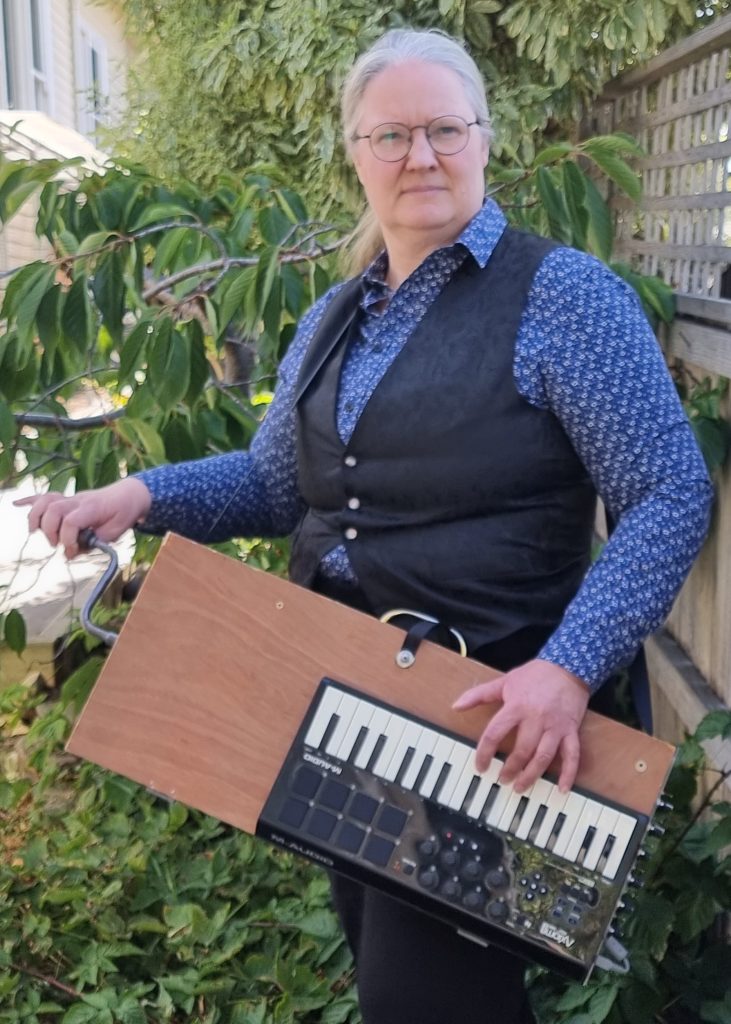
and with generous support from Rant Arts
The Electrogurdy is a novel controller, designed to mimic the haptic functionality of an acoustic hurdy-gurdy. A traditional acoustic hurdy-gurdy incorporates a number of drone strings which can be engaged and disengaged, and at least one “chanterelle” string that is stopped, by way of pressing keys, in order to produce melodic lines (like fingers on a violin’s fingerboard). Both drone and chanterelle strings are vibrated/played by turning a wheel using a handle.
To mimic the function of a traditional hurdy-gurdy, the Electrogurdy was designed with a crank, keys, and various switches and knobs. However, the functional resemblance is entirely at the surface level – a hurdy-gurdy’s architecture is designed to produce sound, whereas the Electrogurdy produces… numbers. Notably: the Electrogurdy, by design, does not produce any sound whatsoever.
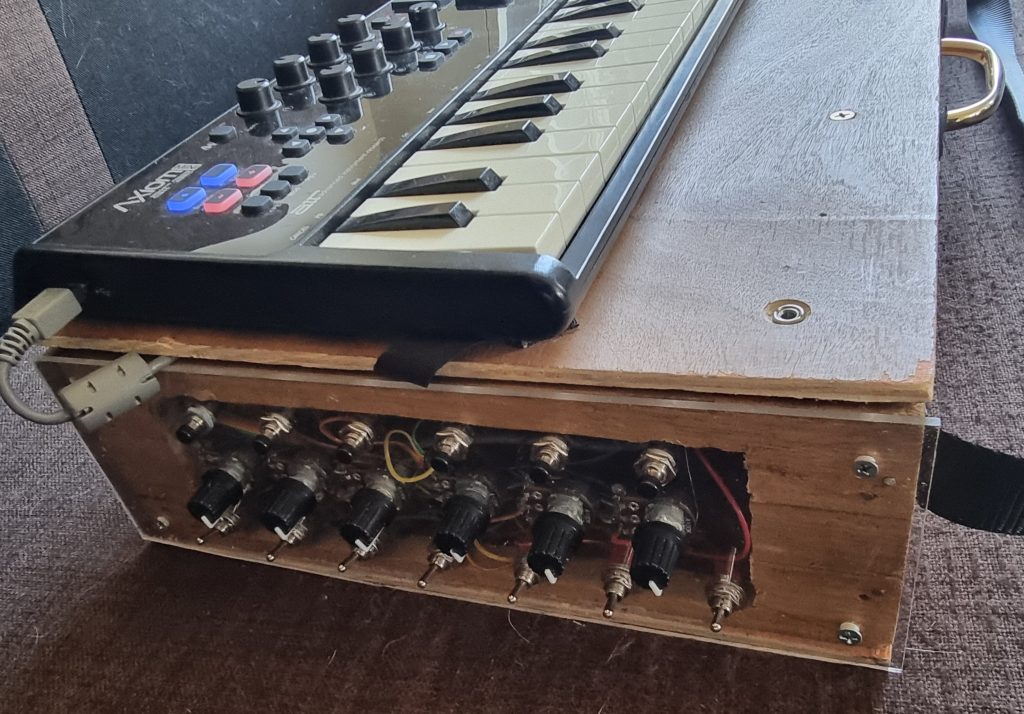
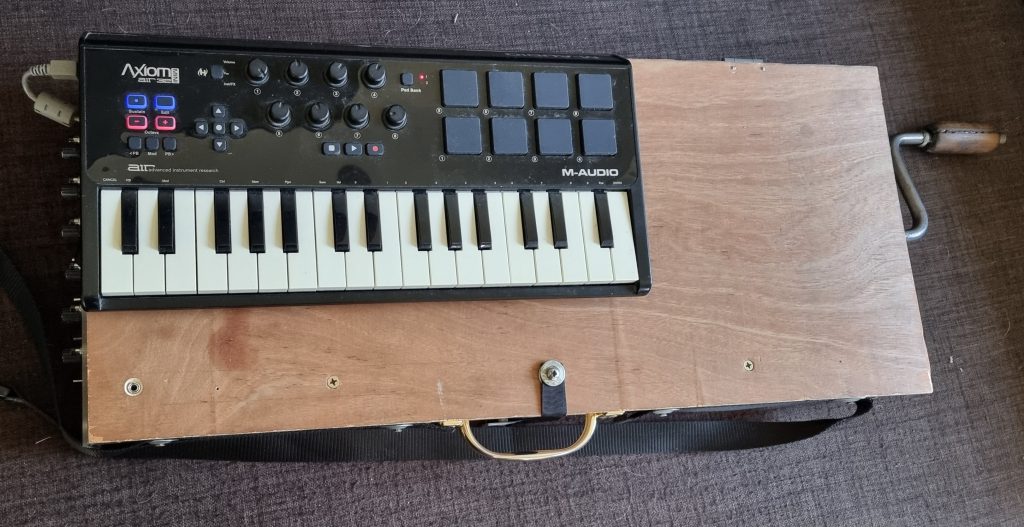
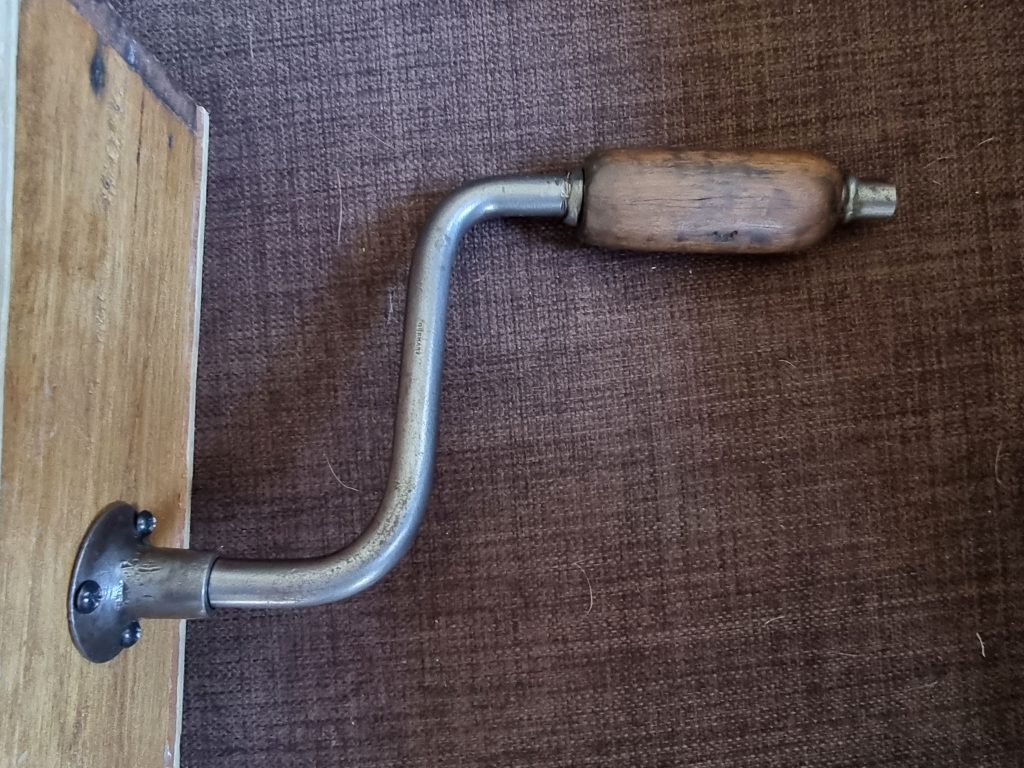
If you’re interested in the nitty-gritty of how it works, here are the cliff notes:
- data produced by the banks of switches and potentiometers (knobs), as well as by a high-definition rotary encoder hooked up to the crank, are read by an arduino;
- the data from the arduino and the prefab miniature keyboard controller are read and processed by a Raspberry Pi running a PureData patch to aggregate, massage and output useful numbers;
- the resulting numbers are transmitted via a wireless MIDI interface.
- The whole device is powered by an onboard rechargeable / hot-swappable power bank.
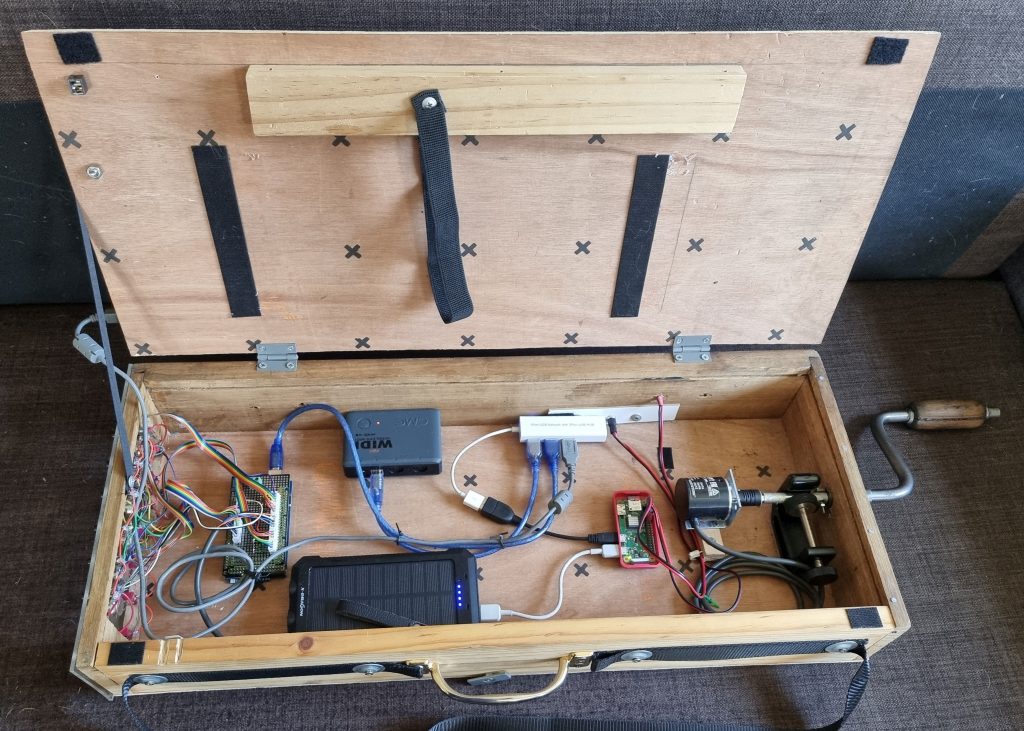
But if it doesn’t produce sound …
what’s the point of it?
Here’s where things get exciting.
An acoustic hurdy gurdy can play a tune and / or drones. A very sophisticated iteration of this instrument can also be played percussively, and can have multiple chanterelle strings producing the same tune at more than one pitch (typically, octaves, fourths or fifths). A traditional hurdy-gurdy’s timbre and pitch range are only mutable to an extremely limited extent; its soundworld is necessarily limited by its mechanics.
The numbers that the Electrogurdy outputs, on the other hand, can be used to control anything that accepts MIDI control. The entire interface is totally programmable. How I use the Electrogurdy is limited only by my imagination, programming ability, and real-time mental dexterity (in remembering which parts of the Electrogurdy control what).
I use the output from the Electrogurdy to control an “audio engine” – that is to say, a completely separate computer dedicated to gathering, manipulating and outputting high quality sound in real time. My audio engine is a laptop hooked up to a Wireless MIDI receiver, an audio interface, microphones and speakers, and running PureData and Audiomulch as my primary live-sound manipulation software.
I can use the Electrogurdy to control parameters of live audio streams (think: volume, speed, pitch, EQ, and more), or loops, or samples, or oscillators, or filters, or synthesisers, or granulations of sound, in as many ways as your imagination can come up with. The way the data is used is entirely programmable. By me. This is both the great opportunity and the great challenge of the Electrogurdy: the possibilities are bewilderingly manifold.
I’m only at the very start of the process of exploring the potential of this machine. What I’ve implemented so far is:
- A digital hurdy-gurdy whose functionality is similar to an acoustic hurdy-gurdy – ie: you can set and change up to two drones, and you can play tunes using the keyboard.
Work is in progress on implementing a “trompette” function whereby I can create a percussive effect by varying the speed at which you turn the crank, and an “organum” function whereby the tune played on the keys can be doubled a fourth or fifth below. The source sound for this instrument can be any single-pitched input I decide on – a purely synthesised sound, a pre-recorded loop, a frozen granulation created as the audience watches… or all of the above – not that I would ever do this, it would be way too confusing in a live performance context! Typically, since I use this instrument for self-accompanying voice, I use either a live or a pre-recorded loop of my voice as the basic single-pitched sound. - A canon-looping engine – the switches and knobs on the side of the Electrogurdy are used to control looping and sampling contraptions.
Other work in progress implementations include:
- a long-form augmentation/diminution sampler, where samples with an original length of up to 15 minutes can be played back at the same pitch but twice as fast or slow as the original, and can also be played forwards or backwards.
- a live polyphony/harmoniser engine, where the incoming sound stream’s pitch is tracked and transposed in real time to create harmonies (played on the keyboard)
Why the Electrogurdy?
I have played the acoustic hurdy-gurdy as part of avant-garde and early music-making for the past 20 years.
I also have a longstanding electroacoustic practice, and some abiding frustrations about that practice. Specifically, it is challenging to evolve a performance which is free-flowing and engaging for the audience, when you’re tied to peering at a laptop screen/clicking around with a trackpad in order to manipulate your sound world as you perform. I have seen and used various novel approaches to gestural/haptic control of electroacoustic music, and I have long been very keen to learn more by way of developing my own instrument/interface – ideally, one that takes advantage of my existing competence. This is how the idea of the electrogurdy was born.
The electrogurdy combines the intuitive playability and untethered-ness of an acoustic hurdy-gurdy with the myriad possibilities and flexible sound-world of live sound manipulation.
Acknowledgements
The Electrogurdy project was funded with generous support from RANT Arts, through the Regional Arts Fund.

Special thanks to Dylan Sheridan for co-design, mentoring and hardware hacking par excellence.
